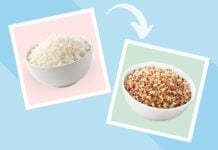Sudden, itchy welts that appear on the skin – that’s hives (also known as urticaria), a common reaction triggered by various factors, including certain fruits. Figuring out which fruits might be causing your hives can feel like navigating a minefield, though. Reactions vary from person to person and depend on individual sensitivities, the types of compounds in fruit, and even regional eating habits.
While pinpointing exact triggers is impossible without proper testing, understanding the potential culprits can empower you to make informed choices about your diet while managing hives. This article breaks down which fruits might be problematic, how they cause reactions, and what to do if you suspect a link between fruit and your hives.
Decoding Fruit Allergies: It’s Not Always Black and White
There are different ways your body can react to fruit, each with its own implications:
- True Allergy: This involves your immune system overreacting to specific proteins found in the fruit. The result? Severe symptoms like swelling, difficulty breathing, even anaphylaxis (a life-threatening emergency). If you have a confirmed allergy to strawberries, for example, those must be strictly avoided.
- Pseudoallergy: This is where naturally occurring compounds like amines and salicylates (sometimes called pseudoallergens) are the suspected culprits. While not technically an immune system response, these can trigger uncomfortable symptoms that might require medical attention – think hives, itching, or even digestive distress.
High-Amine Fruits: A Potential Source of Symptoms
Amines are nitrogen-containing compounds found in many foods, especially those that are aged, fermented, or cured. Think cheeses, pickles, and sauerkraut. While some amines (like histamine) play natural roles in the body, they can cause reactions like hives in sensitive individuals.
High-amine fruits include:
- Bananas
- Avocados
- Dried fruits
- Citrus fruits
- Tomatoes
- Ripe pineapples
Oral Allergy Syndrome: This fascinating phenomenon often involves cross-reactivity between pollen allergies and certain fruit proteins. If you’re allergic to birch pollen, for instance, you might experience hives after eating apples, cherries, or pears.
Glutamates: The Flavor Enhancer Question
Glutamate is an amino acid naturally present in many foods, including tomatoes, spinach, aged cheeses, cured meats, and fermented products. While generally safe, high amounts of synthetic glutamate (MSG) are sometimes added to food for flavor enhancement. There’s limited evidence linking natural glutamate in fruit to hives, though some studies have suggested a possible connection between MSG sensitivity and hives. More research is needed.
Salicylates: The Aspirin Connection
Salicylates are compounds found naturally in many fruits and are related to acetylsalicylic acid – the active ingredient in aspirin. While individuals with an allergy or sensitivity to aspirin-like drugs might be more prone to salicylate reactions, there’s a lack of clear scientific evidence supporting this link between fruit salicylates and hives.
Fruits high in salicylates include:
* Cherries
* Berries (raspberries, blueberries)
* Grapes
* Oranges
* Kiwis
* Pineapples
* Plums
* Dried fruits
* Tomatoes and tomato products
The Bottom Line on Fruit and Hives
Most fruits are safe for people experiencing hives. Many even with oral allergy syndrome find that cooked or processed fruits don’t trigger symptoms. However, dried fruit should be approached cautiously due to added sulfites used as preservatives, which can sometimes worsen allergic reactions.
If you suspect a particular fruit is causing your hives, it’s crucial to consult an allergist. They can perform tests and provide personalized guidance on managing your condition. Remember, fruits are packed with nutrients, so eliminating them entirely could lead to nutritional deficiencies. Always prioritize professional medical advice when making dietary changes.




















